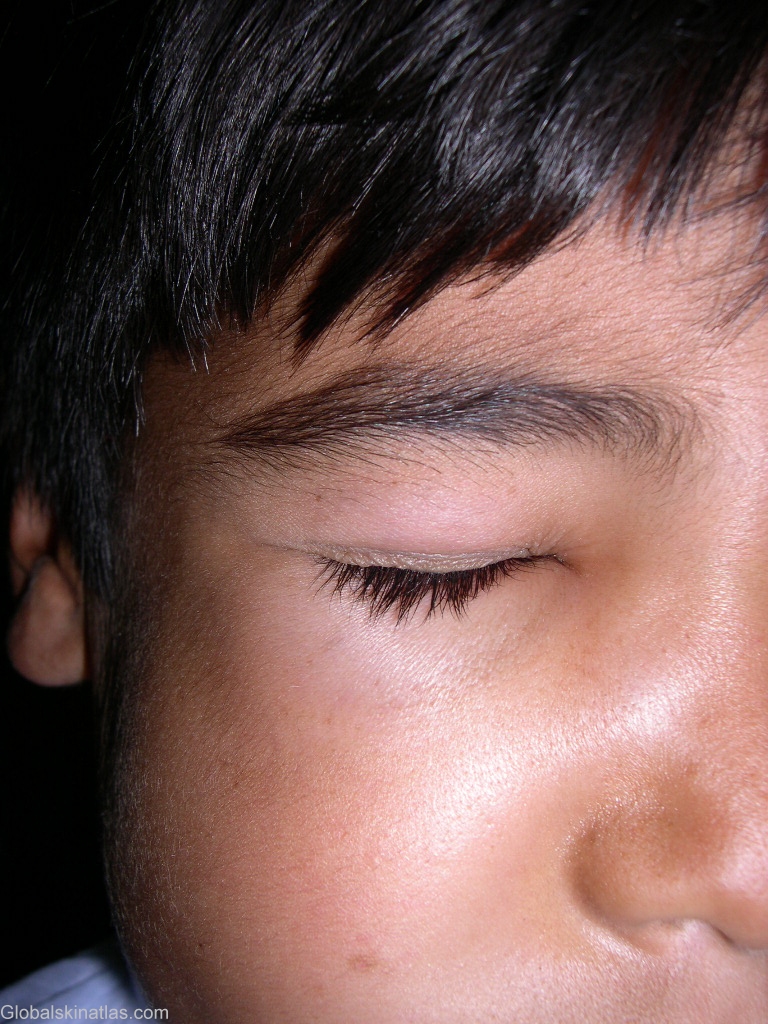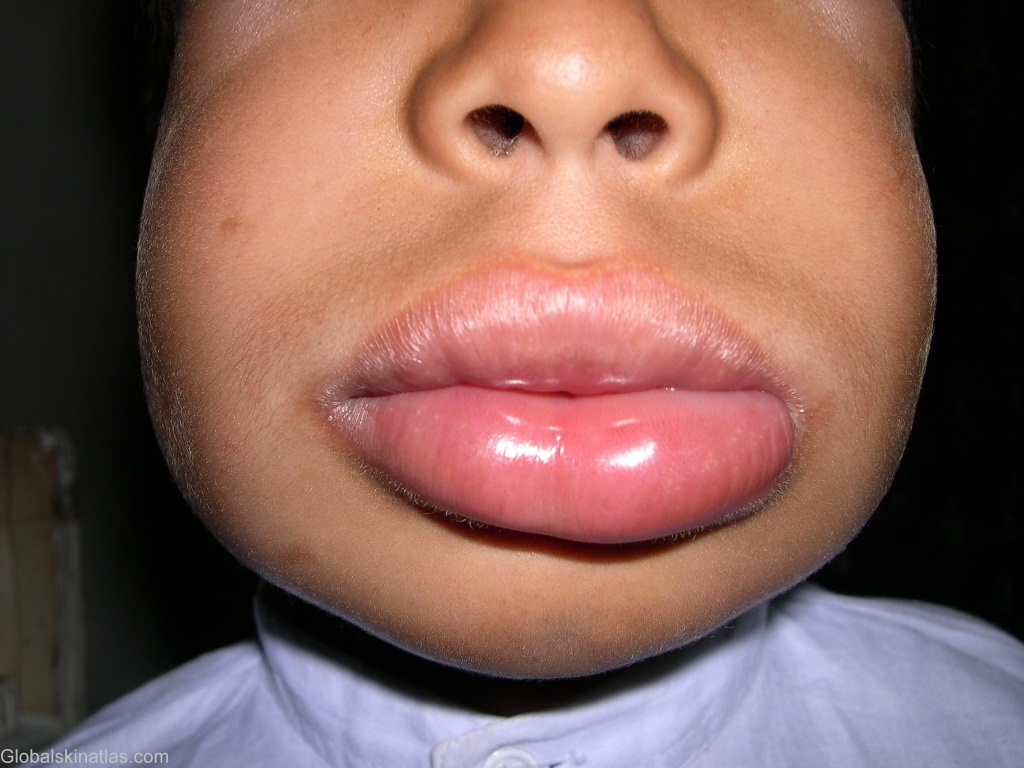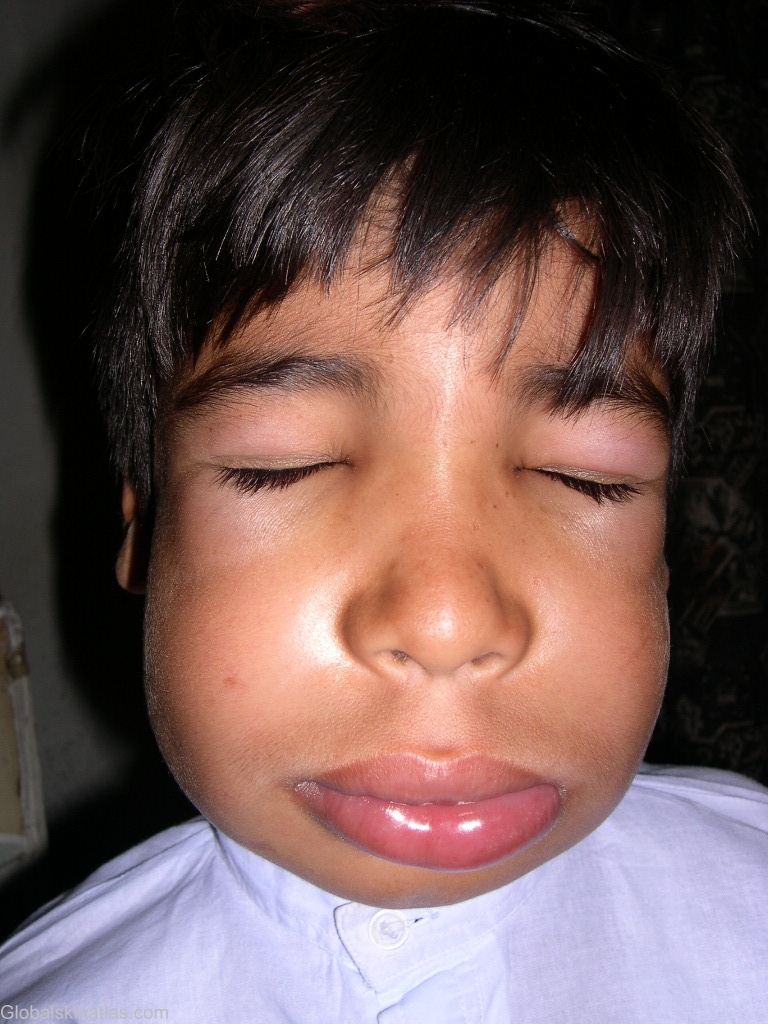

Diagnosis: Angioedema
Description: Angioedema
Morphology: Swelling
Site: Eyelids
Sex: M
Age: 6
Type: Clinical
Submitted By: Shahbaz Janjua
Differential DiagnosisHistory: Although it is appreciated that perioral and periorbital involvement like this is not found in hereditary angioedema, angioedema caused by C1 esterase inhibitor defeciecy is asymmetric, asymptomatic and usually affects extremities, trunk and mucosal membranes of larynx, gut and bladder. Moreover, it usually presents in the second to fourth decades. However a history of recurrent angioedema without urticaria may suggest a rare disorder of C1esterase inhibitor deficiency, which may be inherited as a autosomal dominant or acquired angioedema due to C1esterase inhibitor deficiency which may present as an acute episode of regional swelling following trauma (eg, dental manipulation of the oropharynx) or episodic abdominal pain which is thought to be secondary to angioedema involving the intestinal tract. Although C1 esterase inhibitor deficiency may present as an acute episode, detailed history may confirm the recurrent nature of these disorders. It is advised that screening C4 levels be obtained on all patients with chronic angioedema without urticaria, especially patients with the aforementioned history. C4 levels are usually decreased during both symptomatic and asymptomatic periods of the disease, while C2 levels are reduced only during attacks. If the C4 level is reduced, quantitative C1 esterase inhibitor levels should be obtained. If these levels are normal, a functional assay should then be done. Fifteen percent (15%) of patients with hereditary C1esterase inhibitor deficiency have evidence of dysfunctional inhibitor protein with normal quantitative levels of C1esterase inhibitor. Patients with chronic angioedema without urticaria may have acquired C1esterase inhibitor deficiency associated with a lymphoproliferative disorder or a systemic connective tissue disease. For frequent episodes of angioedema due to C1 esterase deficiency, prophylactic management is possible with anabolic steroids (eg, Danazol or Stanazolol). The treatment choices for recurrent acute life threatening attacks of C1esterase inhibitor deficiency (hereditary or acquired) are limited and usually supportive. Some clinicians advocate treatment with plasma infusions or C1esterase inhibitor concentrates although the latter are not commercially available.

